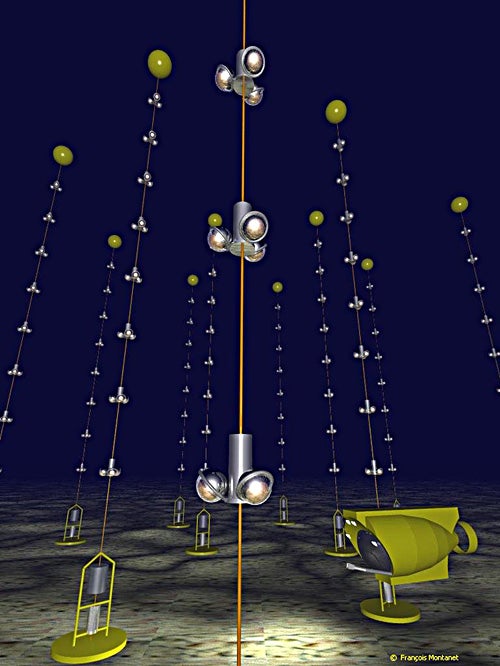Bennett Link of Montana State University and Fiorella Burgio of Italy’s National Institute of Nuclear Physics think pulsars may emit more than their familiar radio beacons. The scientists argue these stellar remnants may be among the sky’s brightest sources of muon neutrinos. Link and Burgio call these potential sources “neutrino pulsars.”
Neutrinos are will-o’-the-wisp particles produced in many astrophysical situations — from normal nuclear fusion in stars to a supernova explosion. Because neutrinos don’t interact much with normal matter, they can bring astronomers information from very long distances and from places no other probe can reach — but, for the same reason, they’re also difficult to detect.
A neutron star born within the past 100,000 years emits as much energy as our Sun — but from a surface 5 billion times smaller, and mostly in the form of X rays. The pulsar’s intense electric and magnetic fields easily whip charged particles to near light-speed. This, in turn, generates the thin, sweeping radiation beam now observed from more than 1,500 neutron stars.
Link and Burgio contend that if these fields accelerate protons to sufficiently high energies near the pulsar’s surface, the particles will scatter off the star’s X rays and produce high-energy muon neutrinos. Just like the radio-wave emissions, the neutrino beam will sweep around as the star rotates. “If the beam intersects Earth,” Link says, “the star would then be a neutrino pulsar.”
Neutrino pulsars could rank among the sky’s strongest sources of high-energy muon neutrinos and might be the first such sources found. “Detection of any high-energy neutrinos from astrophysical sources would open an exciting new window to the study of high-energy astrophysical processes,” says Link.
Writing in the May 13 Physical Review Letters, the team estimates 10 neutrino pulsars lie within 15,000 light-years of Earth and suggests two new facilities put detection within reach. ANTARES, a French-led effort, is being built beneath the Mediterranean Sea and should begin operation in 2007. IceCube, a cubic-kilometer “neutrino telescope” built into ice, is now under construction at South Pole Station in Antarctica.
At energies of a trillion electron volts and more, the atmospheric background from cosmic rays — a source of possible confusion for a detector like ANTARES — is so low that seeing a single muon would represent a statistically significant neutrino find, notes the team.










